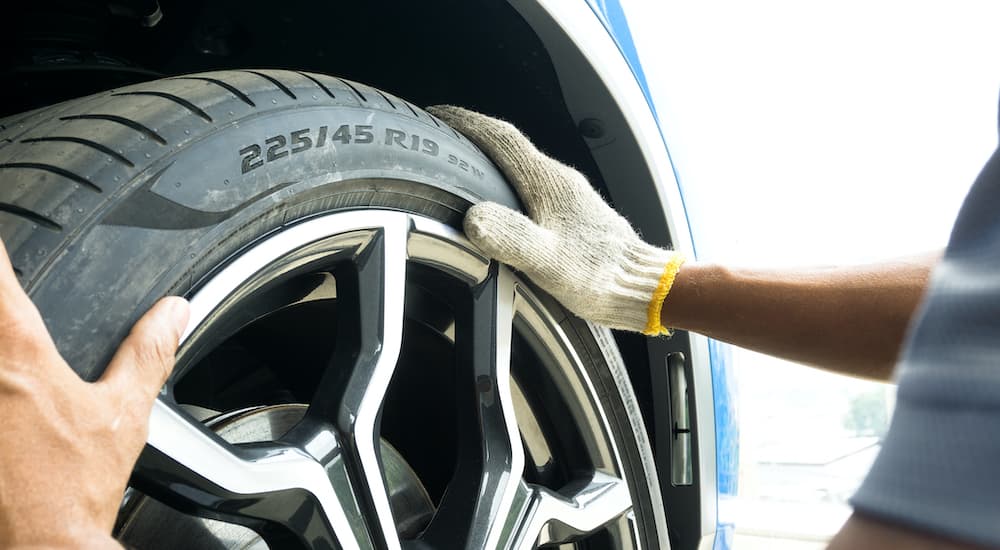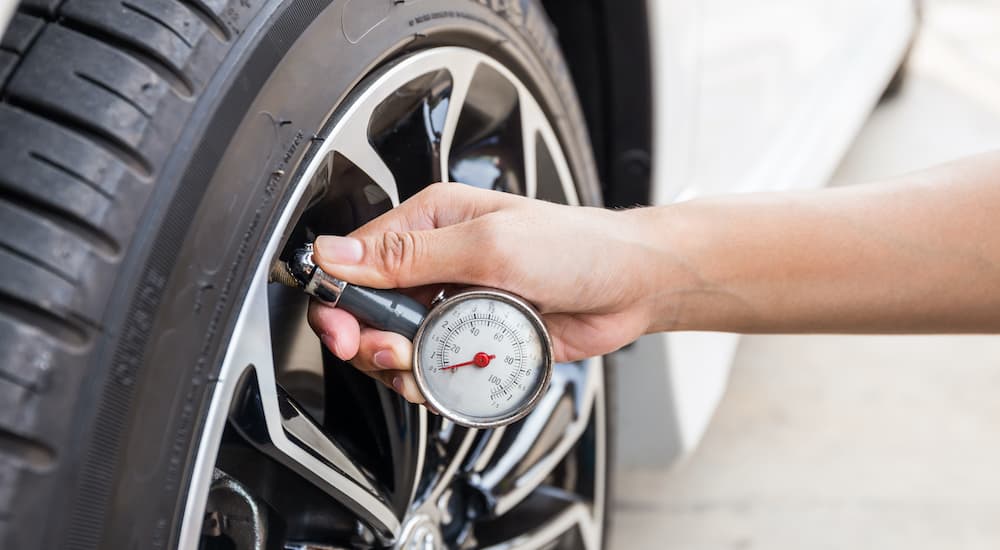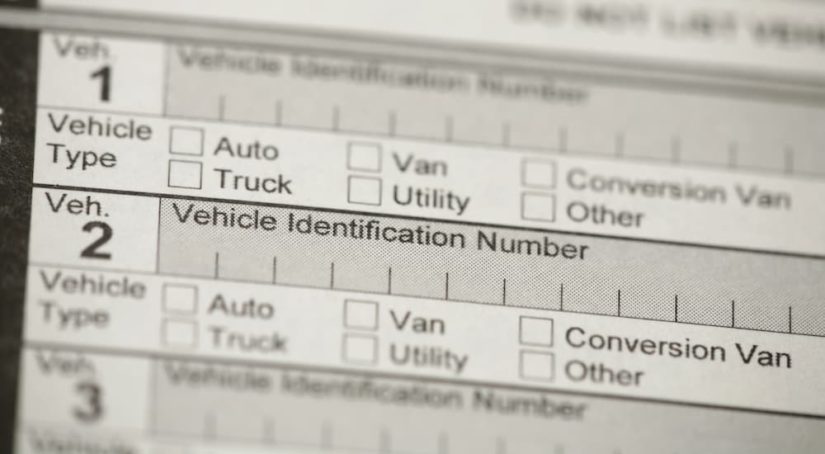Did you know that there’s more to shopping for a car than running a quick search for the best online car dealer near you? While the search will get you off to a great start, you’ll discover that there is a learning curve in the automotive industry. Things like towing capacity and payload, routine maintenance, tire size, and VIN all play a role in your search for the best car for your needs. That being the case, here are a few things that everyone should know about cars to make the car-buying process easier and more enjoyable.
#1 – What’s a VIN?
VIN is shorthand for “Vehicle Identification Number” and is a vehicle’s fingerprint or unique identifier. This isn’t a number that you have to memorize, but you’ll need to know where it’s located for insurance and registration purposes. So, how do you find it?
The VIN can be found in several locations, the easiest of which doesn’t require you to have keys to the vehicle. Stand outside the vehicle on the driver’s side and look at the corner where the dashboard and windshield meet to find the VIN. If you have keys to the vehicle, open the driver’s door to find the VIN printed on the doorframe. You can also find the VIN on the vehicle’s title, registration, and insurance paperwork.
Now that you’ve found the VIN, what does it mean? The 17-digit code is divided into three segments – World Manufacturer Identifier (WMI), Vehicle Descriptor Section (VDS), and Vehicle Identifier Section (VIS). Let’s break it down.
- WMI: Digits 1 through 3 identify the vehicle’s country of origin, manufacturer, and vehicle type.
- VDS: Digits 4 through 8 identify the vehicle model, body type, restraint system, transmission type, and engine code. Digit 9 is the check digit that detects fraudulent VINs.
- VIS: Digit 10 indicates the vehicle’s year, and digit 11 indicates the manufacturing plant. Digits 12 through 17 indicate the vehicle’s unique serial number off the assembly line.

#2 – How to Select the Right Tire Size
Your tires are your vehicle’s only point of contact with the road. When it’s time to replace your tires, it’s important to know the right tire size as this optimizes how your vehicle performs and ensures your safety on the road. Fortunately, automotive and tire manufacturers make it easy to find this information. You’ll find it listed in the owner’s manual and on a sticker located on the inside of the driver’s door.
You can also look at your current tires to get the information you need and verify that they match the manufacturer’s recommendation. When you do this, you’ll find a unique code printed on the sidewall of your tire. The code looks like a foreign language but tells you everything you need to know about the tires. Let’s use the following code as an example: P225/70R16 91S.
- Sizing (P225): This indicates the width of the tires measured in millimeters. P indicates the P-Metric system and identifies tires used for passenger cars, SUVs, and light-duty trucks.
- Aspect Ratio (70): This is the aspect ratio of your tire’s sidewall height to its width and is read as a percentage. For this example, the tire’s sidewall height is 70% of its 225-mm width.
- Construction (R): Usually an R, D, or B, this indicates the tire’s construction with “R” for radial, “D” for diagonal, or “B” for Bias Ply. Radial tires are the most common.
- Wheel Diameter (16): Measured in inches, this is the diameter of the wheel. In this example, the tire would fit a wheel with a 16-inch diameter.
- Load Index (91): This number is a bit trickier because it represents how much weight your tire can support. This doesn’t mean your tire can support 91 pounds, however. It correlates to an index where “91” designates the actual carrying weight. In this case, that weight is 1,356 pounds.
- Speed Rating (S): Like the Load Index, the Speed Rating correlates to an index that tells you the maximum speed the tire can safely perform. S-rated tires perform well up to 112 mph, while R-rated tires are best kept to 106 mph or slower.
#3 – When Do You Need an Oil Change?
For years, automakers recommended having your vehicle’s oil changed every 3,000 miles or every three months. This, however, is no longer the case thanks to advancements in the industry and the realization that vehicles are used in vastly different ways and by people with unique driving styles. Every vehicle has its own set of maintenance needs, and the 3,000-mile/3-month rule is no longer one-size-fits-all. In fact, many modern vehicles now recommend oil changes at 10,000 miles or once a year.
Your owner’s manual is your best resource for knowing the optimal oil change interval for your vehicle. You’ll also find the manufacturer’s recommendation for the type of oil and filter. Newer vehicles do a lot of the work for you by actively monitoring the level and quality of the oil in correlation with mileage and driving conditions. When it’s time for an oil change, you’ll see an alert on the driver information display. Older models without this feature require a little more work on your part, which can include checking the oil level yourself, referencing your owner’s manual, and making a note of your mileage.
#4 – Towing Capacity and Payload: What’s the Difference?
When you’re shopping for a truck or large SUV, you need to know the difference between towing and payload. Payload is the amount of weight your vehicle can safely carry and includes everything from you and your passengers to the load of mulch in the bed of the truck. Towing capacity refers to the amount of weight your truck can safely pull and stop.
As you shop for a truck, think about how you plan to use the truck and the type of power you need. Gas-powered trucks typically offer higher payloads, while diesel-powered trucks are known for their exceptional towing capability. This is because diesel-powered engines deliver more torque or pulling power, which makes them a must-have on heavy-duty workhorses, whether you’re hauling a load of cattle, a camper, or a full-size ski boat.

#5 – Tire Pressure: Why It Matters
While we’ve already talked about the importance of selecting the right size of tire, you also need to be aware of the air in your tires. Tire pressure is one of the most ignored aspects of routine vehicle maintenance; it’s easy to simply assume that your tires will stay inflated unless you run over something sharp or hit a curb. That’s not the case, however.
Many newer vehicles are equipped with tire pressure monitoring systems that alert us to underinflated tires. What if your vehicle doesn’t come with this system? What if your tires are overinflated? You can use a traditional tire gauge to measure the pressure and compare it to the manufacturer’s recommended rating. Overinflated tires are hazardous and can lead to blowouts that can cause you to lose control of the vehicle, which is especially dangerous at high speeds.
What Have You Learned?
Are you ready to start shopping for the best online car dealer near you? You can do so with confidence now that you know more of the lingo and the basics of car maintenance. From vehicle identification numbers and oil changes to towing, payload, and all things tire-related, you should have the confidence to start your search for the perfect vehicle that meets all your driving needs.



